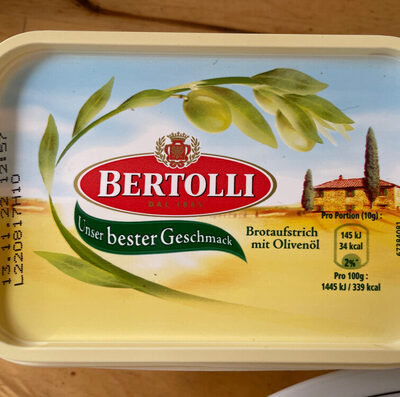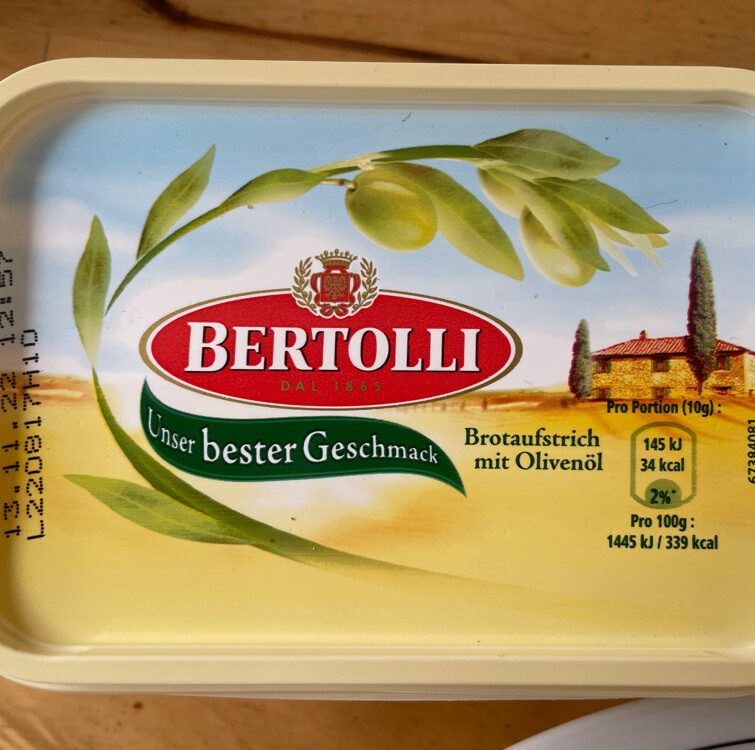Bertolli Brotaufstrich mit Olivenöl - 250gr
This product page is not complete. You can help to complete it by editing it and adding more data from the photos we have, or by taking more photos using the app for Android or iPhone/iPad. Thank you!
×
Barcode: 8719200045262 (EAN / EAN-13)
Quantity: 250gr
Brands: Bertolli
Categories: Brotaufstriche, Pflanzliche Brotaufstriche, Streichfette
Countries where sold: Germany
Matching with your preferences
Environment
Packaging
Transportation
Threatened species
Report a problem
Data sources
Product added on by elcoco
Last edit of product page on by halal-app-chakib.
Product page also edited by ecoscore-impact-estimator, elcoco.31f2cbf7b5f22319ab2e5aeefa91aa11, gmlaa, grumpf, kiliweb, lusthase, nutriman, openfoodfacts-contributors, prepperapp, roboto-app, ruhja, scanbot, thaialagata, wolfyibm, yuka.sY2b0xO6T85zoF3NwEKvlhBmaP38iDvoESbRlRKwxtuiArHrUclq2qjlFKs, yuka.sY2b0xO6T85zoF3NwEKvlm1rbobDrzPDBQztvE2RwdefP4HPUOxNwrbECqs.











